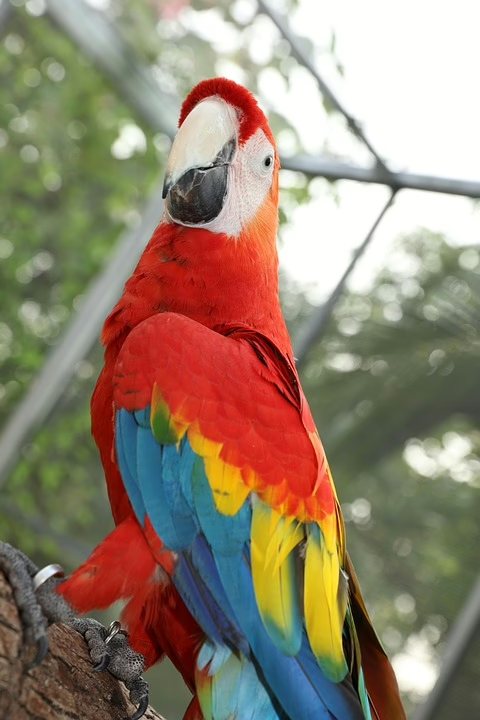Preserving the Precious: Conservation Efforts for Rare Beauty in Nature
The intricate web of life that constitutes our planet is filled with creatures and ecosystems whose existence is invaluable, yet many are threatened by human activity. Conservation efforts have become a crucial element in ensuring the survival of these rare beauties, and understanding these efforts provides insight into the challenges and successes of preserving our natural world. This article will explore the various conservation strategies employed to protect endangered species and habitats, highlight case studies of successful initiatives, and discuss the ongoing challenges in the quest to preserve nature’s most precious treasures.
The Importance of Biodiversity
Biodiversity—the variety of life on Earth—is essential for the stability and resilience of ecosystems. It contributes to the resilience of food systems, providing genetic diversity that can help crop species withstand disease and changing climates. Moreover, a rich diversity of species supports ecosystem services such as pollination, water purification, and carbon sequestration. The loss of biodiversity, therefore, not only endangers individual species but undermines the health of the planet as a whole. Current estimates suggest that one million species are at risk of extinction, primarily due to habitat destruction, climate change, pollution, and overexploitation of resources[^1].
Conservation Strategies
1. Protected Areas
Establishing protected areas is one of the most effective strategies for conserving biodiversity. National parks, wildlife sanctuaries, and marine reserves provide safe havens for threatened species and ecosystems. For instance, Yellowstone National Park in the United States has been a model for conservation since its establishment in 1872. It protects not only the iconic grizzly bears and wolves but also various ecosystems such as geothermal features and old-growth forests[^2]. Globally, multiple international treaties, such as the Convention on Biological Diversity, call for the protection of at least 17% of terrestrial and 10% of marine areas by 2020, aiming for greater representation of biodiversity[^3].
2. Species Recovery Programs
Species recovery programs focus on rehabilitating populations of threatened species through targeted actions. The California Condor recovery program is a notable example, initiated in the 1980s when only 27 individuals remained in the wild. Through captive breeding, habitat protection, and community engagement, the population has increased to over 400 birds today[^4]. Such programs often include public education initiatives to raise awareness and support for conservation efforts, which are critical for fostering a culture of appreciation for biodiversity.
3. Community Involvement
Engaging local communities in conservation efforts is essential for long-term success. Indigenous peoples often have deep-rooted connections to their environments and possess traditional ecological knowledge that can enhance conservation practices. For example, in the Amazon rainforest, many communities practice sustainable resource management, which helps preserve biodiversity while supporting their livelihoods[^5]. Moreover, community-based conservation initiatives, such as ecotourism, can provide economic incentives for preserving natural areas.
4. Legislative Frameworks
Strong legal frameworks are paramount in enforcing conservation efforts. International agreements, such as the Convention on International Trade in Endangered Species of Wild Fauna and Flora (CITES), regulate trade in endangered species to prevent exploitation. Additionally, national laws, such as the Endangered Species Act in the United States, provide protections for threatened species and their habitats[^6]. Advocacy and activism are crucial in influencing policy changes and holding governments accountable, driving further conservation gains.
5. Restoration Ecology
Restoration ecology focuses on rehabilitating degraded ecosystems to restore their natural functions and biodiversity. Efforts include reforestation, wetland restoration, and the removal of invasive species. The ongoing restoration of the Everglades in Florida seeks to revitalize an ecosystem critical for water quality and wildlife habitat, benefiting both biodiversity and local communities[^7]. Restoration initiatives not only help recover species but also promote ecosystem services that benefit human populations.
Case Studies in Conservation
1. The Giant Panda
The giant panda (Ailuropoda melanoleuca) is an iconic species that has become a symbol of global conservation efforts. Once classified as endangered, the population has rebounded thanks to extensive conservation programs in China. These programs include habitat preservation, anti-poaching measures, and breeding efforts in captivity[^8]. As a result, pandas were downgraded to “vulnerable” in 2016, illustrating the potential for recovery through dedicated conservation efforts.
2. The Grey Wolf
The reintroduction of the grey wolf (Canis lupus) in Yellowstone National Park has provided insight into the cascading effects of predator recovery on ecosystem health. After being extirpated from the area in the 1920s, wolves were reintroduced in 1995, leading to significant ecological changes. Their presence has helped regulate elk populations, subsequently allowing willow and aspen trees to flourish, which in turn supports various animal and plant species[^9]. This case demonstrates the importance of top predators in maintaining ecosystem balance and the success of targeted conservation programs.
3. The Monarch Butterfly
The monarch butterfly (Danaus plexippus) is famous for its spectacular migration across North America. However, its population has declined dramatically due to habitat loss and climate change. Conservation efforts, including planting milkweed (the monarch’s host plant) and habitat restoration, are essential to reversing these trends. In Mexico, where monarchs winter, governmental and non-governmental organizations are working together to protect key breeding and wintering habitats[^10]. There is hope that collaborative conservation can stabilize and restore this beloved species.
Challenges Facing Conservation Efforts
Despite the successes of various conservation initiatives, numerous challenges persist. Climate change remains one of the most significant threats to biodiversity, impacting species ranges, migration patterns, and breeding behaviors. The rapid rate of environmental change often outpaces the ability of species to adapt, leading to population declines and extinctions[^11].
Additionally, habitat destruction continues unabated, driven by agriculture, urbanization, and infrastructure development. Even protected areas can be threatened by encroachment, pollution, and climate impacts. Invasive species pose another challenge, as they can outcompete native species for resources, leading to declines in biodiversity[^12].
Furthermore, funding for conservation remains inadequate. Many organizations rely on donations and grants, which can be inconsistent. The need for sustainable financing mechanisms, such as biodiversity offsets and payments for ecosystem services, is critical to securing long-term conservation funding[^13].
The Role of Technology in Conservation
Advancements in technology are increasingly integral to conservation efforts. Remote sensing, drones, and GIS (Geographic Information Systems) are being utilized to monitor ecosystems, track wildlife populations, and assess habitat changes over time. Moreover, genetic sequencing has opened new avenues for understanding species diversity and developing breeding programs[^14]. Citizen science platforms allow the public to engage in conservation efforts, reporting observations of species and contributing valuable data to researchers and conservationists.
The Future of Conservation
As we look to the future, a multifaceted approach to conservation will be paramount. Integrating scientific research with traditional ecological knowledge, fostering collaborations across sectors, and prioritizing community involvement will be crucial steps in achieving meaningful progress[^15]. Additionally, addressing the root causes of biodiversity loss, such as unsustainable consumption and climate change, will require systemic changes at individual, corporate, and governmental levels.
For future generations to experience the grandeur of both iconic and lesser-known species, a comprehensive commitment to conservation is essential. By fostering environmental stewardship and a deep appreciation for the natural world, society can work toward a vision where both humans and wildlife coexist harmoniously.
Conclusion
In conclusion, the conservation of rare and endangered species, as well as the preservation of their habitats, is a complex and ongoing challenge that requires a collective effort. A diverse array of strategies, from establishing protected areas to community involvement, have shown promise in safeguarding the planet’s rich biodiversity. However, formidable challenges remain, and the urgency of the situation necessitates a robust and adaptable approach to conservation.
Through the lessons learned from past successes and failures, combined with innovative technologies and community engagement, we can strive to ensure that the precious beauty of nature is preserved for future generations. Only then can we move toward a more sustainable and harmonious existence alongside the rich tapestry of life that our planet offers.
[^1]: “Global Assessment Report on Biodiversity and Ecosystem Services,” United Nations, 2019.
[^2]: “Yellowstone National Park and the American Conservation Movement,” National Park Service.
[^3]: “Aichi Biodiversity Targets,” Convention on Biological Diversity, 2010.
[^4]: “California Condor Recovery Program,” U.S. Fish and Wildlife Service.
[^5]: “Indigenous Peoples and Biodiversity,” United Nations Environment Programme.
[^6]: “Endangered Species Act,” U.S. Fish and Wildlife Service.
[^7]: “Everglades Restoration Plan,” South Florida Water Management District.
[^8]: “Giant Panda National Conservation,” World Wildlife Fund.
[^9]: “The Ecological Importance of Wolves in Yellowstone,” Yellowstone National Park Service.
[^10]: “Conservation Efforts for Monarch Butterflies,” U.S. Fish and Wildlife Service.
[^11]: “Climate Change and Biodiversity,” Intergovernmental Science-Policy Platform on Biodiversity and Ecosystem Services, 2019.
[^12]: “Invasive Species and Biodiversity,” National Invasive Species Information Center.
[^13]: “Biodiversity Finance: Developing a Sustainable Funding Model,” United Nations Environment Programme.
[^14]: “The Role of Technology in Wildlife Conservation,” Wildlife Conservation Society.
[^15]: “Integrating Traditional and Scientific Knowledge in Conservation,” The International Journal of Biodiversity Science, Ecosystem Services & Management.


























Add Comment